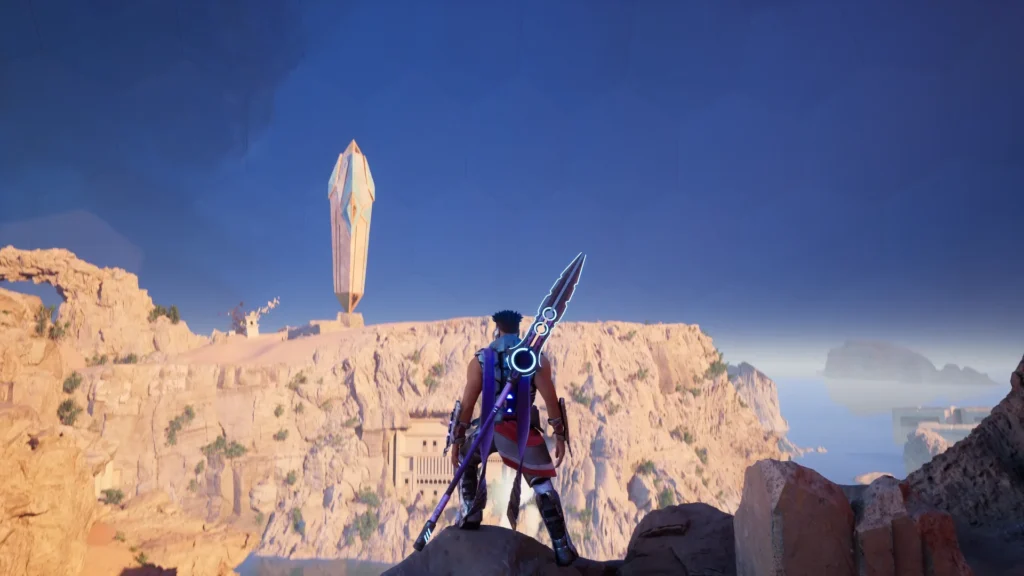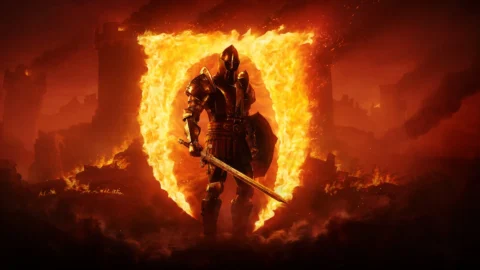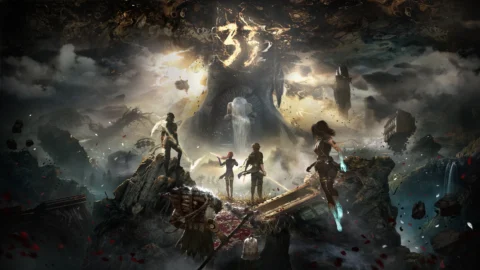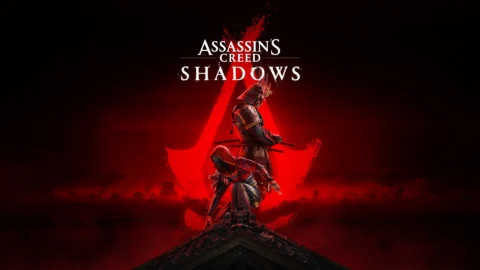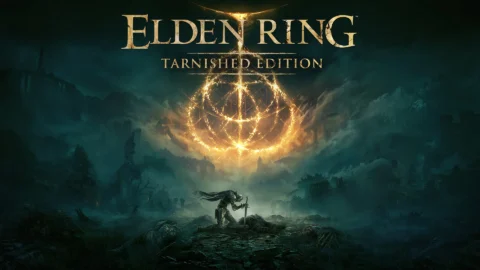Empyreal (em-ˈpir-ē-əl) – adj. 1: of or relating to the empyrean, celestial 2: sublime
Admittedly, I wasn’t aware “empyreal” was a word, let alone its meaning. So, understanding the title felt like a necessary first step before diving into the game itself. Empyreal comes from Silent Games, a studio featuring several former Ubisoft developers. It’s always intriguing to see what creators do when they venture out independently after making their mark at a larger company. Empyreal is their offering: an action RPG with a sci-fi theme that, in many ways, feels reminiscent of Ubisoft’s style, while in others, seems to actively push against it.
At its core, Empyreal pits you, a mercenary hired by a failing Company expedition, against a colossal structure known as the Ziggurat. Located on some distant planet, this Ziggurat appears even larger on the inside (a touch of Doctor Who, perhaps?) and holds a mystery at its core that you’re tasked with uncovering. Your mission is simple: explore it.
Exploring the Ziggurat’s Depths

Within the Ziggurat lies danger, but you are more than capable. As an action RPG, Empyreal feels somewhat like a more contained Destiny, while also attempting an evolution of Souls-like mechanics. However, in a move that feels distinctly un-Ubisoft, there’s not much in the way of open exploration. The travel system is convoluted, and despite aiming for a sense of massive scale, the areas feel smaller than they perhaps should. You’ll find hidden nooks and secret areas within each zone, but the world isn’t seamlessly connected in a way that encourages freeform exploration. Each area functions more like a level from an old-school platformer: you fight through waves of smaller, but by no means easy, enemies before confronting a boss at the end. There’s some randomness to enemy placement and loot drops, but the layouts repeat frequently enough that you’ll quickly become overly familiar with the same locations.
The Core Loop: Deep Combat and Addictive Loot
Empyreal clearly places its primary focus on combat and loot. The cycle is simple: fight better to get better loot, to fight even better and get more and even better loot. Thankfully, these systems are surprisingly deep and demand intimate understanding. There are only three weapon types, which sounds limited, but their differences are comparable to the distinct weapon classes in Monster Hunter. You start with the glaive, but quickly gain access to a gun and a mace-and-shield combo, encouraging experimentation.
Switching to the mace and shield presented an unexpectedly steep learning curve. I had assumed the combat system would be fundamentally the same, but the difference felt like learning to ride a bike versus learning to drive a car. While the glaive is agile, favoring hit-and-dodge tactics, the mace-shield is more akin to controlling a tank, relying solely on blocking and parrying for defense rather than dodging. Much of my enjoyment came from the process of learning each weapon and the satisfaction of eventually mastering its unique rhythm.
The loot system mirrors this depth. Beyond the simple joy of collecting better gear, the real engagement comes from the modding system, which allows for fine-tuning each piece of equipment. The flip side is that grinding for specific loot can become tiring. As success depends heavily on your loadout as well as your skill, those who enjoy micromanaging their gear should find plenty to appreciate here.
Challenging Foes, Forgettable Narrative
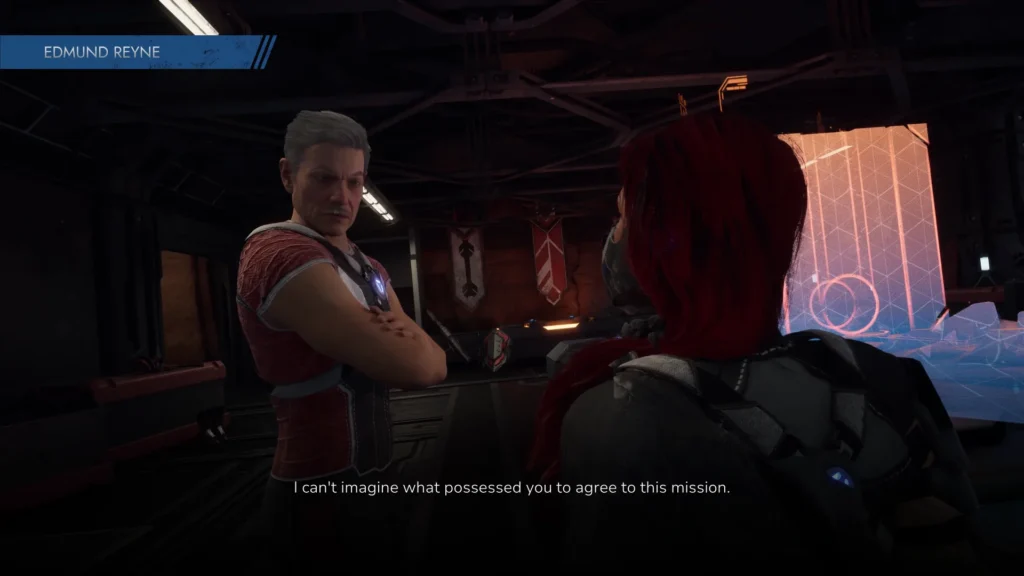
The enemies you face also possess depth, despite a visual similarity among the automatons. Their behaviors vary wildly: some are quick and overwhelming, while others are slow but hit incredibly hard. Bosses, in particular, force you to constantly adapt your approach and often employ novel mechanics designed to frustrate typical strategies, like summoning support or converting your attacks into shields. While they might look alike, their mannerisms amusingly evoke certain RPG character archetypes. Each boss gets a short, wordless mimed intro scene that injects a little personality – one performs a figure-skating routine, while another receives kneeling reverence from bots like a general. These moments are great because, unfortunately, there’s little story-driven buildup for these encounters.
It’s evident that gameplay was the primary focus, as the story is quite a mess. A promising opening movie sets up an epic quest, but little else happens after that. The narrative mostly revolves around limited interactions with characters back at the camp. They offer side quests (which have their own issues), but that’s largely the extent of your connection, aside from occasional, unexpected flashes of inspired writing. The rest of the crew remains strangely cheerful given their dire circumstances.
The narrative does pick up near the end, but it shifts into such an abstract space that it renders the overall experience incomprehensible. There’s a vague undertone connecting the extraterrestrial with the divine, which is intriguing but underdeveloped. The developers might have aimed for FromSoftware-style environmental storytelling with the Ziggurat’s varied biomes, but nothing truly grabbed my attention beyond a passing glance.
Navigation Hurdles and Lingering Jank
Despite the strong combat and equipment management, persistent issues cause frustration. Returning to the Ubisoft connection, it’s odd how Empyreal feels similar to typical Ubisoft games in some ways while simultaneously taking an opposite approach to common complaints about them. For instance, the side quest list is refreshingly brief, but the game provides no guidance, meaning you’ll only stumble upon required items accidentally. Empyreal generally struggles with guidance. New elements are often mentioned fleetingly in dialogue and sometimes aren’t added to the tutorial list. If you dislike handholding, this is the opposite problem – a lack of clear markers to even point you in the right general direction.
There’s a general thread of that recognizable “Ubisoft jankiness” throughout, from combat feel to navigating the hub. Inside the Ziggurat, the game is refreshingly hands-off, letting you explore without overbearing objective markers. However, the surprisingly large camp area sorely needed a minimap or fast travel, especially since characters are always in the same location. It’s also baffling that you must visit specific armory locations in the camp to change your loadout instead of accessing it from the menu anywhere.
While learning the weapons is part of the fun, grappling with the game’s jank is also part of the learning curve. The gun is particularly awkward, requiring a little reloading mini-game that you must perform constantly. Item use is also counter-intuitive; actions you expect to be simple, like using healing items, feel clumsy. None of these issues individually ruin the experience, but collectively, they make you appreciate games with more polish.
Presentation: Some Highs, Many Lows
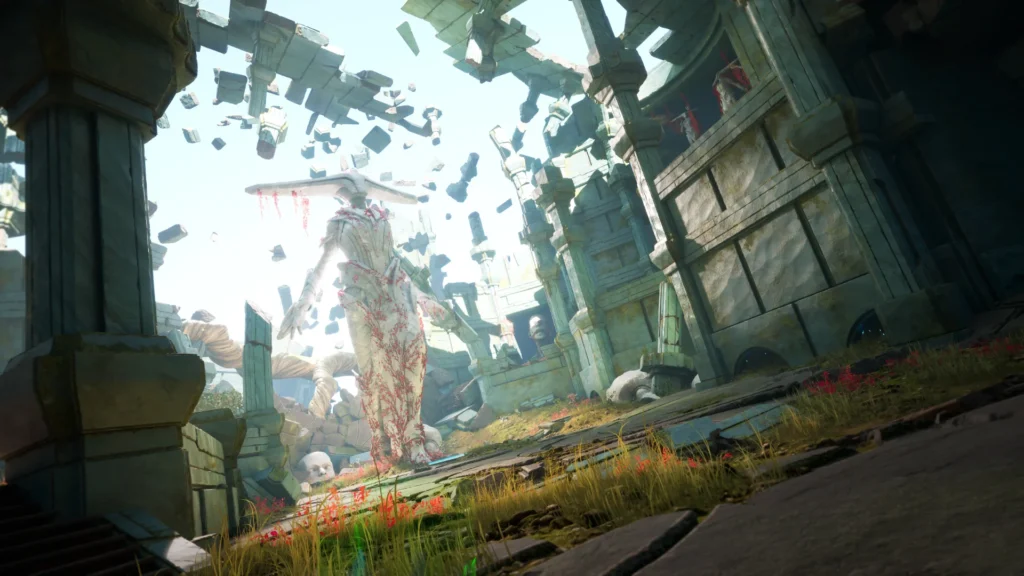
Empyreal looks good visually, particularly the environmental details like the artificial sky in the desert biome. For fans of customizing their character’s look, there’s enjoyment in seeing how your appearance evolves with new gear – I happily took on the final boss sporting a windbreaker with neon yellow sleeves. While the automatons are well-designed, their similar appearances highlight a limitation in the visual style. Other characters are seen infrequently and usually from a distance, though they look fine from afar.
The audio design is less impressive. The music is largely forgettable, relying on generic “space epic” or “heroic moment” horn blasts you’ve heard countless times before. There’s one particularly odd vibrating rumble track in the camp that sounds like a loose audio cable, prompting me to check my speakers repeatedly. Voice acting is mostly inoffensive but uninspired, save for the sassy adventurer Isolda, whose lively performance makes her interactions enjoyable. Sound effects are punchy and solid, but again, nothing remarkable. Controls, thankfully, are spot-on for an action game, feeling responsive even if hammering the parry button while learning the timing looks a little silly.
A Focused But Cold Experience
There’s nothing inherently wrong with a development team focusing intensely on specific aspects of a game and knowing where to put their effort while downplaying limitations. Empyreal is undeniably all about the combat and loot, and this shows in the solid, deep systems for fighting and tinkering with your loadout.
If this game aims to be part Destiny and part Souls-like with nods to old-school levels, it doesn’t entirely fail, but it doesn’t fully succeed either. The main problem with eschewing a strong story and other elements is that the overall experience can feel cold and bland. Those who genuinely love mastering deep combat systems and optimizing loot builds will likely find a lot to love in Empyreal, but players seeking more from their gaming experience may find it less than sublime.

